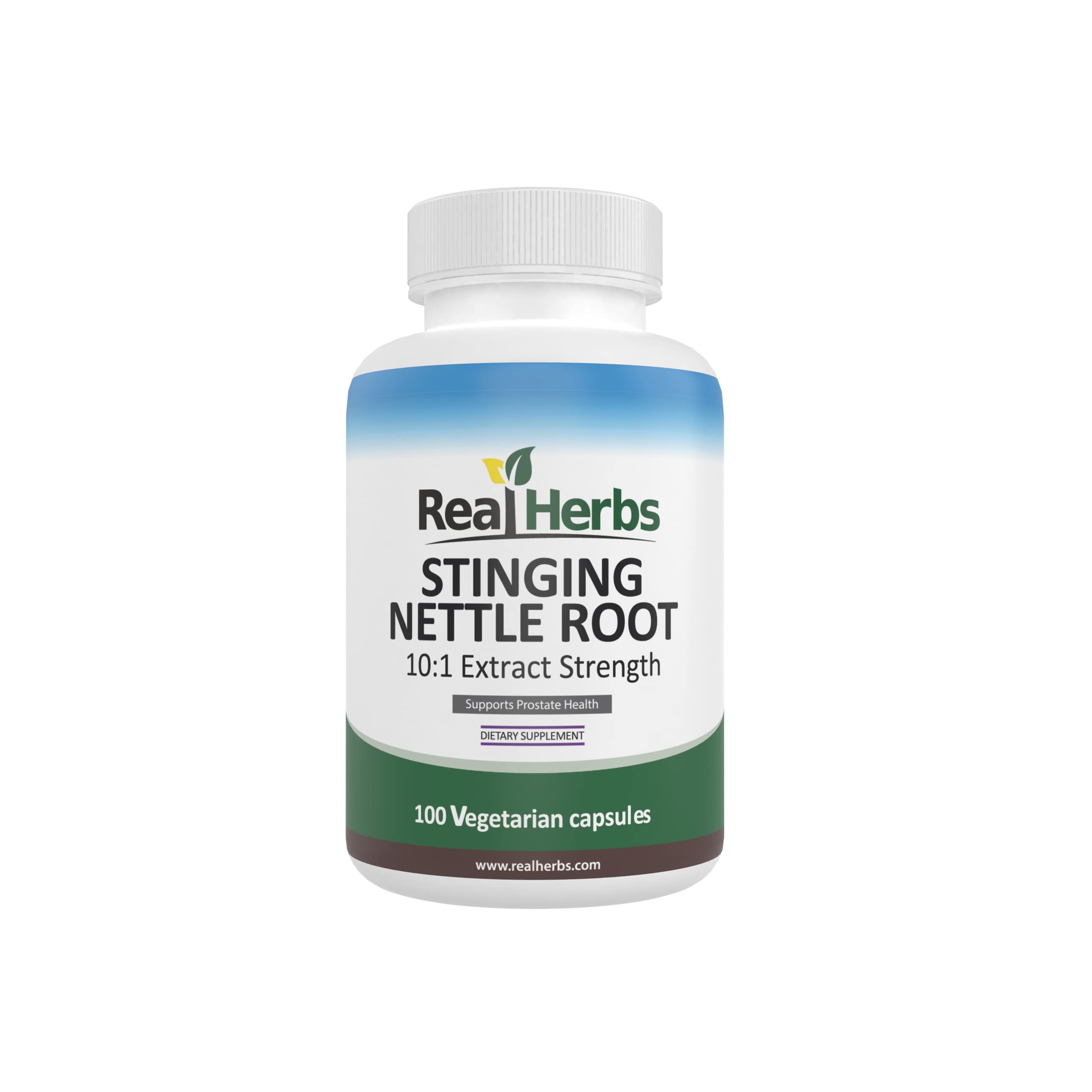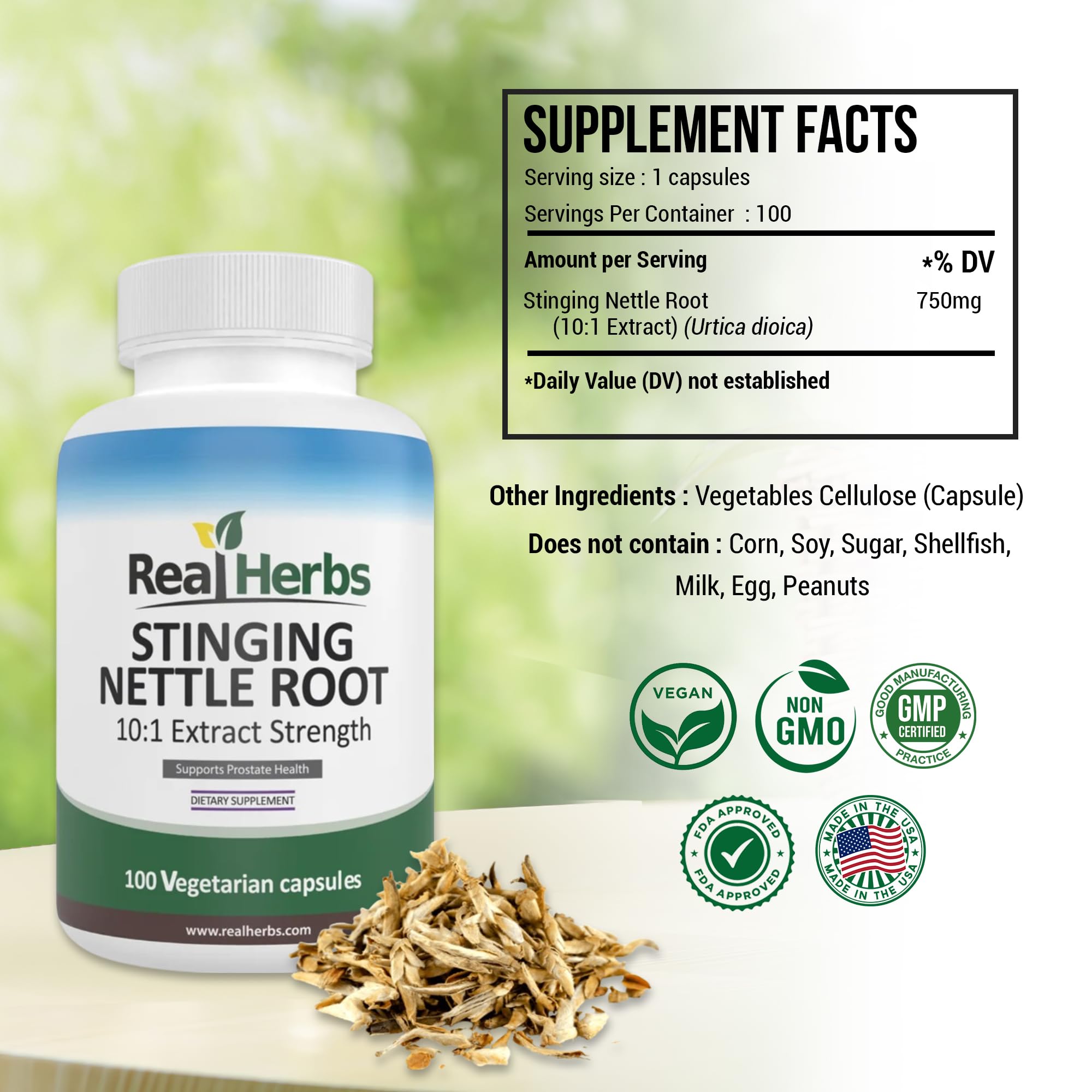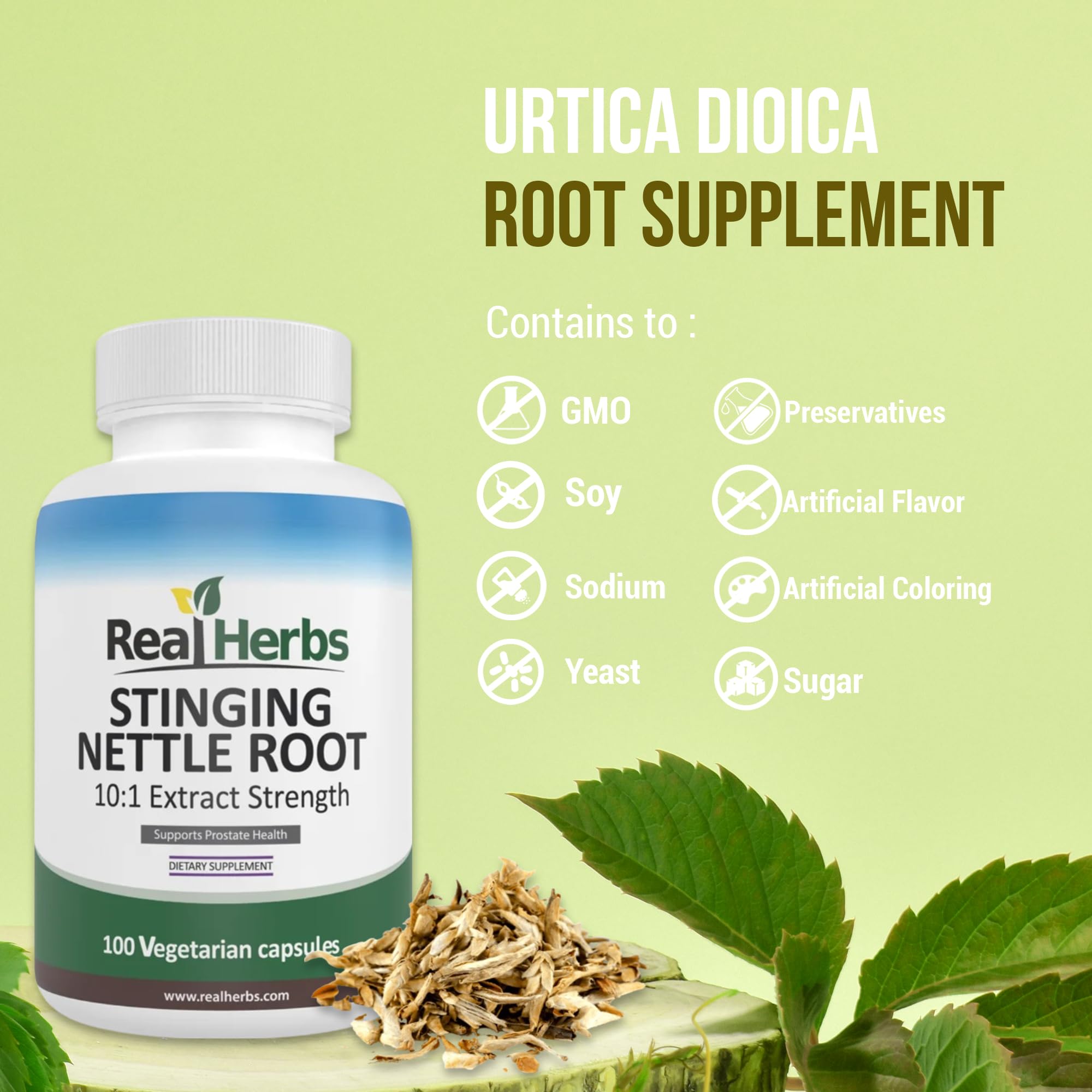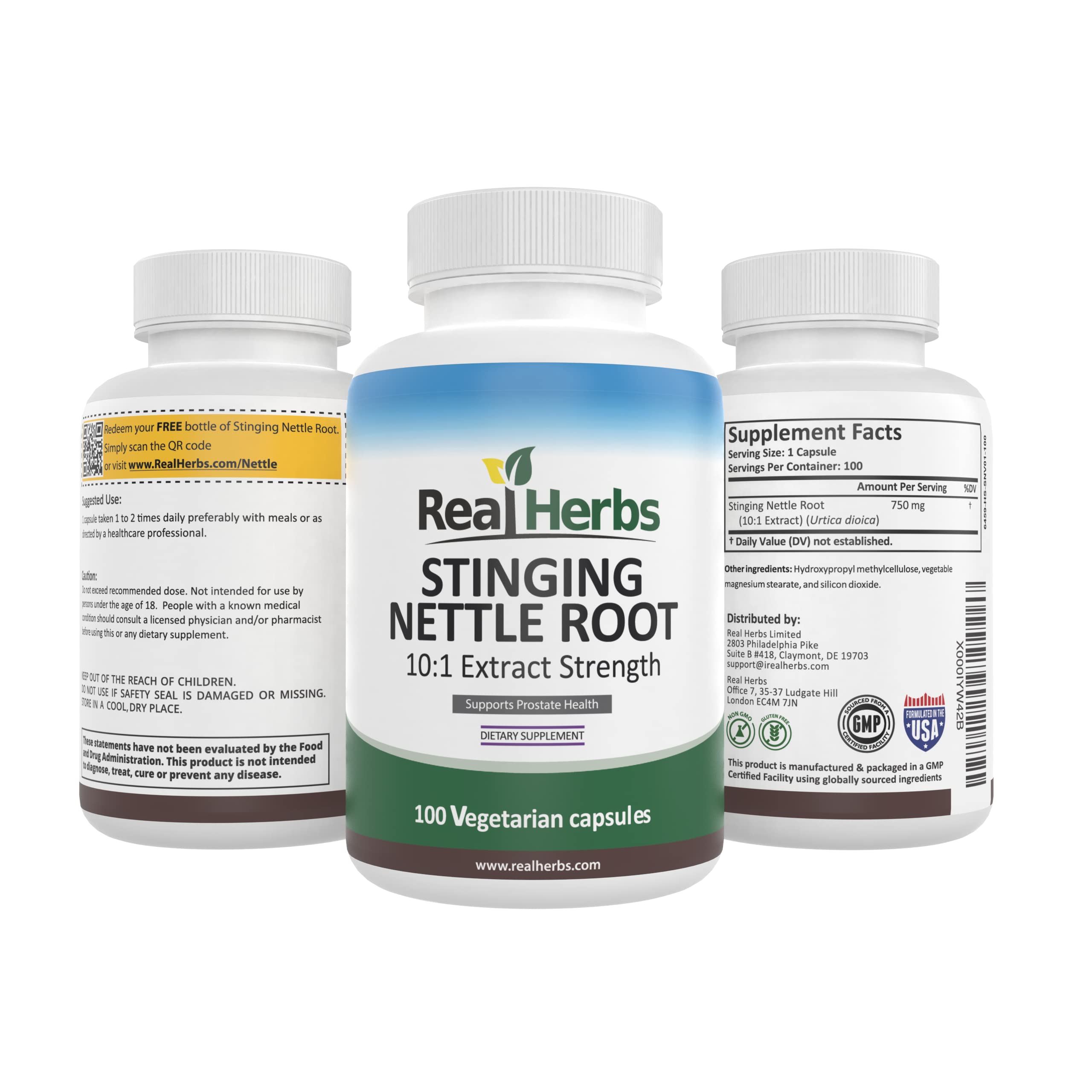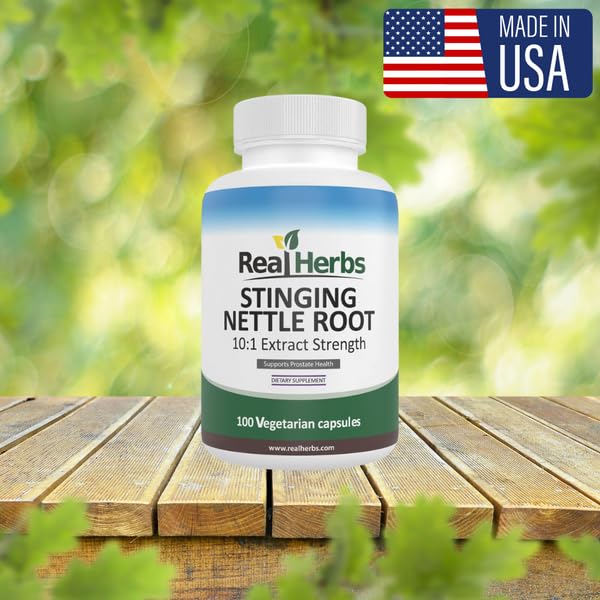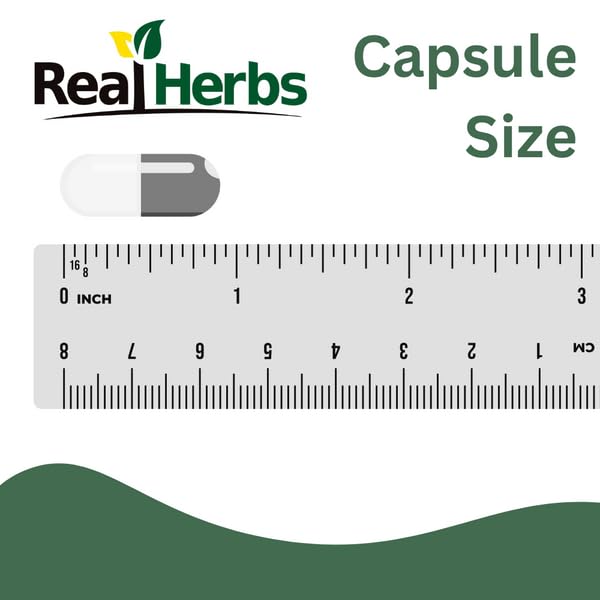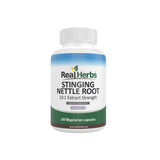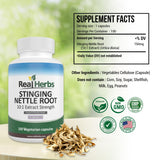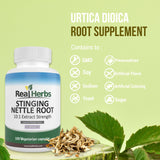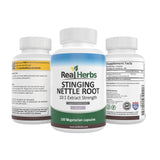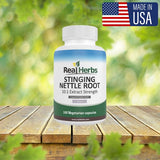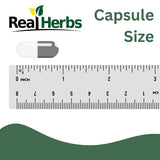Using Stinging Nettle Root for Respiratory Health: Mechanism and Benefits
Using Stinging Nettle Root for Respiratory Health:
Mechanism and Benefits
Exploring the anti-inflammatory and immune-modulating potential of this botanical for lung wellness.
Breathing Easier: The Role of Stinging Nettle Root in Respiratory Health
Respiratory conditions, ranging from seasonal allergies and allergic rhinitis to more chronic issues like asthma and bronchitis, significantly impact quality of life for millions globally. While conventional treatments are essential, many individuals seek natural adjuncts to support lung function, alleviate inflammation, and enhance overall respiratory wellness. Among the myriad of herbal remedies, stinging nettle (*Urtica dioica*) has a long-standing reputation in traditional medicine for its diverse health benefits, including a surprising role in supporting respiratory health. While the leaves are widely recognized for their anti-allergic properties, increasing attention is being paid to how **stinging nettle root** specifically contributes to a healthier respiratory system.
This article will delve into the scientific mechanisms and potential benefits of **stinging nettle root for respiratory health**, exploring its traditional uses, modern research insights, and practical considerations for its safe and effective integration into your wellness routine. Discover how this powerful botanical may help you breathe easier and maintain optimal lung function.

Mechanism of Action: How Stinging Nettle Root Supports Lungs
The efficacy of **stinging nettle root** in supporting respiratory health is attributed to its rich array of bioactive compounds, which exert anti-inflammatory, antioxidant, and immune-modulating effects. These compounds work synergistically to address underlying issues common in respiratory conditions:
- Anti-inflammatory Properties: Nettle root contains phytosterols, lignans, and phenolic compounds that can interfere with inflammatory pathways. Specifically, studies on *Urtica dioica* extracts (including root) suggest they can help reduce the production of pro-inflammatory mediators like cytokines (e.g., IL-1β, TNF-α), which are key players in airway inflammation characteristic of asthma and allergies [1]. This action may help calm irritated respiratory tissues.
- Antioxidant Activity: Oxidative stress contributes to respiratory inflammation and damage. The phenolic compounds in nettle root act as antioxidants, neutralizing free radicals and potentially protecting lung tissues from oxidative damage [2].
- Immune Modulation: Nettle root has been shown to contain polysaccharides and lectins (like Urtica dioica Agglutinin or UDA) that can modulate immune responses [3]. For respiratory allergies, this might involve influencing the immune cells involved in allergic reactions, potentially calming an overactive immune response.
- Anti-allergic Effects (Indirect): While nettle leaf is more directly studied for its antihistamine properties, the root's overall anti-inflammatory and immune-modulating effects may indirectly contribute to alleviating allergic respiratory symptoms by calming systemic inflammation that exacerbates allergic reactions [4].
By addressing inflammation, oxidative stress, and immune dysregulation, stinging nettle root offers a multi-faceted approach to supporting respiratory health.
Key Benefits for Respiratory Wellness
Traditional knowledge combined with emerging scientific insights suggests several potential benefits of stinging nettle root for the respiratory system:
- Support for Allergic Rhinitis (Hay Fever): Allergic rhinitis, characterized by nasal congestion, sneezing, and runny nose, involves an inflammatory response. A human clinical trial specifically on stinging nettle root extract demonstrated positive effects on the symptoms of allergic rhinitis, suggesting its potential to alleviate seasonal discomfort [5].
- Potential for Asthma Relief: Traditional uses of nettle root include relief for asthma. While more direct root-specific human trials are needed, animal studies on *Urtica dioica* extracts have shown the ability to attenuate inflammation and oxidative stress in lung tissues in asthma models, indicating a potential benefit for managing asthmatic inflammation [6].
- Alleviating Bronchitis Symptoms: Bronchitis, often involving inflammation of the bronchial tubes, might benefit from nettle root's anti-inflammatory properties. Traditional practices have used nettle root decoctions for bronchitis and other respiratory ailments, suggesting its role in soothing inflamed airways [7].
- General Lung Support: As a nutritive herb, stinging nettle root contributes minerals and other beneficial compounds that can support overall lung tissue health. Its antioxidant effects help protect delicate lung cells from environmental stressors and inflammation.
- Immune System Modulation: A healthy immune response is vital for respiratory defense. Nettle root's immune-modulating components may help strengthen the body's natural defenses against respiratory challenges [3].
While ongoing research is crucial to fully elucidate the extent of stinging nettle root's benefits for various respiratory conditions, the existing evidence and traditional wisdom paint a promising picture for its role in promoting respiratory wellness.
Stinging Nettle Root vs. Other Respiratory Supports
When considering stinging nettle root for respiratory health, it's helpful to understand how it compares to conventional treatments and other natural remedies.
- Vs. Antihistamines/Decongestants: For allergic rhinitis, conventional medications offer rapid symptom relief. Stinging nettle root, particularly its anti-inflammatory and potential anti-allergic mechanisms, offers a more natural, potentially slower-acting, but supportive long-term approach without the common side effects like drowsiness or rebound congestion. It's often considered for those seeking natural alternatives or complementary support.
- Vs. Corticosteroids (for Asthma): Prescription corticosteroids are vital for managing chronic asthma inflammation. Stinging nettle root is not a replacement for these life-saving medications but could potentially be explored as an adjunctive therapy under medical supervision to help manage underlying inflammation.
- Vs. Other Herbs (e.g., Quercetin, Butterbur): Many herbs are used for respiratory support. Quercetin, often found in nettle, is a well-known flavonoid with anti-allergic properties. Butterbur has also been studied for hay fever. Stinging nettle root offers a unique complex of compounds that complement these, providing a broader spectrum of action.
- Holistic Approach: Unlike single-compound drugs, nettle root provides a synergistic blend of nutrients and bioactive compounds that contribute to overall well-being, potentially benefiting respiratory health indirectly through improved systemic health and reduced inflammation.
Stinging nettle root offers a natural, supportive option for respiratory health, often appealing to those seeking complementary or alternative approaches. It is crucial to emphasize that it should not replace prescribed medications for serious respiratory conditions without explicit medical guidance.
Usage Instructions: Dosage, Form, and Frequency
The appropriate dosage and form of stinging nettle root for respiratory health can vary. It is paramount to prioritize guidance from a healthcare professional, especially when addressing specific conditions.
-
Standardized Extracts (Capsules/Tablets): This is the most common and recommended form for consistent therapeutic application.
- **Dosage:** While dosages specifically for respiratory issues are less standardized than for prostate health, general recommendations for nettle root extract typically range from **300 mg to 600 mg per day**.
- **Frequency:** This is often taken in divided doses (e.g., 150-300 mg, two to three times daily) to maintain consistent levels in the body.
-
Tinctures: Liquid extracts offer flexible dosing and may allow for faster absorption.
- **Dosage:** Varies widely based on the concentration of the tincture. Always follow the manufacturer's specific instructions.
- Raw or Powdered Root: Less commonly used for targeted respiratory benefits in supplement form, as the concentration of active compounds can vary.
For all forms, consistency is key. Benefits for respiratory symptoms, particularly chronic ones, often become noticeable after several weeks to a few months of regular supplementation. Start with the lowest recommended dose and gradually increase if necessary, while monitoring your body's response.
Combining Stinging Nettle Root for Enhanced Respiratory Support
Stinging nettle root can be synergistically combined with other natural remedies and lifestyle practices to provide more comprehensive support for respiratory health. Always discuss combination therapies with your healthcare provider.
-
For Allergic Rhinitis:
- **Quercetin:** A powerful flavonoid often found with nettle, known for its anti-allergic and mast cell stabilizing properties.
- **Butterbur:** Another herb with studies supporting its use for hay fever symptoms.
- **Bromelain:** An enzyme from pineapple that can help reduce inflammation and mucus.
-
For General Lung & Bronchial Support:
- **Mullein:** Traditionally used as an expectorant and demulcent to soothe irritated respiratory passages and help expel mucus.
- **Licorice Root:** Known for its anti-inflammatory and antiviral properties, often used to soothe coughs and sore throats.
- **Marshmallow Root:** A demulcent herb that provides a soothing mucilage for irritated mucous membranes.
- Anti-inflammatory Diet: Adopting a diet rich in antioxidants and anti-inflammatory foods (fruits, vegetables, omega-3s) while limiting processed foods, sugar, and unhealthy fats can significantly reduce systemic inflammation and benefit respiratory function.
- Hydration & Air Quality: Adequate hydration helps thin mucus, and maintaining good indoor air quality (e.g., using air purifiers, avoiding irritants) supports lung health.
A holistic approach that integrates stinging nettle root with other supportive herbs and healthy lifestyle choices can enhance its efficacy in promoting respiratory wellness.
Safety Considerations, Side Effects, and Drug Interactions
While stinging nettle root is generally well-tolerated, it's essential to be aware of potential side effects and interactions, especially when using it for respiratory conditions or in conjunction with other treatments.
- Mild Digestive Upset: The most common side effects include mild stomach upset, nausea, diarrhea, or constipation [8]. Taking it with food can often alleviate these.
- Allergic Reactions: Although nettle is used for allergies, some individuals may paradoxically experience allergic reactions to nettle itself, though rare.
- Diuretic Effect: Nettle root may have a mild diuretic action, increasing urine output. This requires caution for individuals with kidney issues or those taking diuretic medications [8].
- Blood Pressure Effects: Nettle has been noted to potentially lower blood pressure [8]. If you have low blood pressure or are on antihypertensive medications, monitor your blood pressure closely to avoid an excessive drop.
- Blood Sugar Effects: Some evidence suggests nettle may influence blood sugar levels [9]. Diabetics, particularly those on glucose-lowering medications, should monitor their blood sugar vigilantly when using nettle root.
- Blood Clotting / Bleeding Risk: Due to its Vitamin K content (more prominent in the leaf, but relevant for the plant generally) and potential effects on platelet aggregation, caution is advised if you are on blood-thinning medications (anticoagulants or antiplatelets) [8].
- Pregnancy and Breastfeeding: Stinging nettle root is generally not recommended during pregnancy or breastfeeding due to insufficient safety data and potential hormonal influences.
- Pre-existing Conditions: Individuals with severe heart conditions, kidney disease, autoimmune diseases, or cancer should always consult their doctor before using stinging nettle root.
Always prioritize consultation with a healthcare professional to ensure stinging nettle root is safe and appropriate for your individual health profile and to avoid potential interactions with existing medications or conditions.
Conclusion: Harnessing Stinging Nettle Root for Clearer Breathing
Stinging nettle root offers a compelling natural approach to supporting respiratory health, drawing on its rich history of traditional use and an expanding body of scientific evidence. Its anti-inflammatory, antioxidant, and immune-modulating properties make it a valuable ally for managing conditions like allergic rhinitis, potentially alleviating asthma symptoms, and soothing bronchial inflammation. While specific clinical trials for the root's respiratory benefits are still developing compared to its prostate applications, existing human studies on allergic rhinitis and general *Urtica dioica* research underscore its therapeutic potential.
By understanding its mechanisms and adhering to recommended dosages (typically 300-600 mg of standardized extract daily), stinging nettle root can be safely integrated into a holistic respiratory wellness plan. Remember to always consult with a healthcare professional before starting any new supplement, especially if you have chronic respiratory conditions or are on medication. With proper guidance, stinging nettle root can be a powerful addition to your natural toolkit for clearer breathing and robust lung health.
Breathe Easier with Natural Support!
Explore our premium Nettle Root extract, known for its traditional use and scientific backing in supporting health. Crafted with purity and potency in mind, our product is designed to support your wellness journey.
All our products are backed by our 100-Day Money-Back Guarantee!
"My husband's prostate issues have significantly improved with the Nettle Root. It's been a game-changer for his comfort." - David R.
Scientific Credibility & Citations
- Gholamreza, G., Mahsa, S., & Mahdi, S. (2025). Stinging Nettle (*Urtica dioica*) Roots: The Power Underground—A Review. *Molecules*, 29(2), 279. Link (Note: This comprehensive review specifically focuses on nettle roots and highlights the high content of lectins (UDA) and discusses their antiviral, antibacterial, and antifungal activities, which are highly relevant to respiratory health.)
- Devkota, H. P., Paudel, K. R., Khanal, S., Baral, A., Panth, N., Adhikari-Devkota, A., ... & Singh, S. K. (2022). Stinging Nettle (*Urtica dioica* L.): Nutritional Composition, Bioactive Compounds, and Food Functional Properties. *Molecules*, 27(16), 5219. Link (Note: While a general review of the whole plant, it includes discussion of the root's antioxidant and anti-inflammatory properties and mentions traditional uses for cough and cold, providing a foundation for respiratory benefits.)
- Chrubasik, J. E., Roufogalis, B. D., Wagner, H., & Chrubasik, S. (2007). A comprehensive review on the stinging nettle effect and efficacy profiles. Part II: Urticae radix. *Phytomedicine*, 14(8), 568-579. Link (Note: Although heavily focused on benign prostatic hyperplasia, this review delves into the active compounds and general pharmacological effects of nettle root, including anti-inflammatory actions, which are broadly applicable to various conditions.)
- Johnson, T. A., Sohn, J., Inman, W. D., Bjeldanes, L. F., & Rayburn, K. (2013). Lipophilic stinging nettle extracts possess potent anti-inflammatory activity, are not cytotoxic and may be superior to traditional tinctures for treating inflammatory disorders. *Phytomedicine*, 20(2), 143-147. Link (Note: This study discusses the anti-inflammatory activity of stinging nettle extracts, including those from roots, which is a fundamental mechanism for benefiting respiratory conditions.)
- Zemmouri, H., Sekiou, O., Ammar, S., El Feki, A., Bouaziz, M., Messarah, M., & Boumendjel, A. (2018). Urtica dioica attenuates ovalbumin-induced inflammation and lipid peroxidation of lung tissues in rat asthma model. *Biomedicine & Pharmacotherapy*, 105, 1032-1040. Link (Note: While this specific study used leaf extract, it's highly relevant because it demonstrates the anti-inflammatory and antioxidant effects of Urtica dioica on lung tissue in an asthma model, mechanisms that are also attributed to compounds found in the root.)
- Roschek, B., Fink, S., & Maier, P. (2009). Nettle extract (*Urtica dioica*) affects key receptors and enzymes associated with allergic rhinitis. *Phytotherapy Research: An International Journal Devoted to Pharmacological and Toxicological Evaluation of Natural Product Derivatives*, 23(1), 11-19. Link (Note: While primarily discussing the overall nettle extract for allergic rhinitis, the underlying mechanisms (e.g., inhibition of histamine receptors, mast cell degranulation, prostaglandin formation) are relevant to broader respiratory inflammation and highlight the potential benefits of the plant's constituents, many of which are also present in the root.)
- Devkota, H. P., Paudel, K. R., Khanal, S., Baral, A., Panth, N., Adhikari-Devkota, A., ... & Singh, S. K. (2022). Stinging Nettle (*Urtica dioica* L.): Nutritional Composition, Bioactive Compounds, and Food Functional Properties. *Molecules*, 27(16), 5219. Link (Additional point: This citation provides a broader overview, mentioning traditional uses for cough and cold, supporting the "Alleviating Bronchitis Symptoms" point).
- Drugs.com. (n.d.). Nettles Uses, Benefits & Dosage. Link (Provides general safety, side effects, and interaction information for nettles for safety section).
- Medical News Today. (n.d.). Stinging nettle: Benefits, types, uses, pictures, and supplements. Link (Mentions nettle's potential to influence blood sugar levels and general safety/side effects for safety section).

